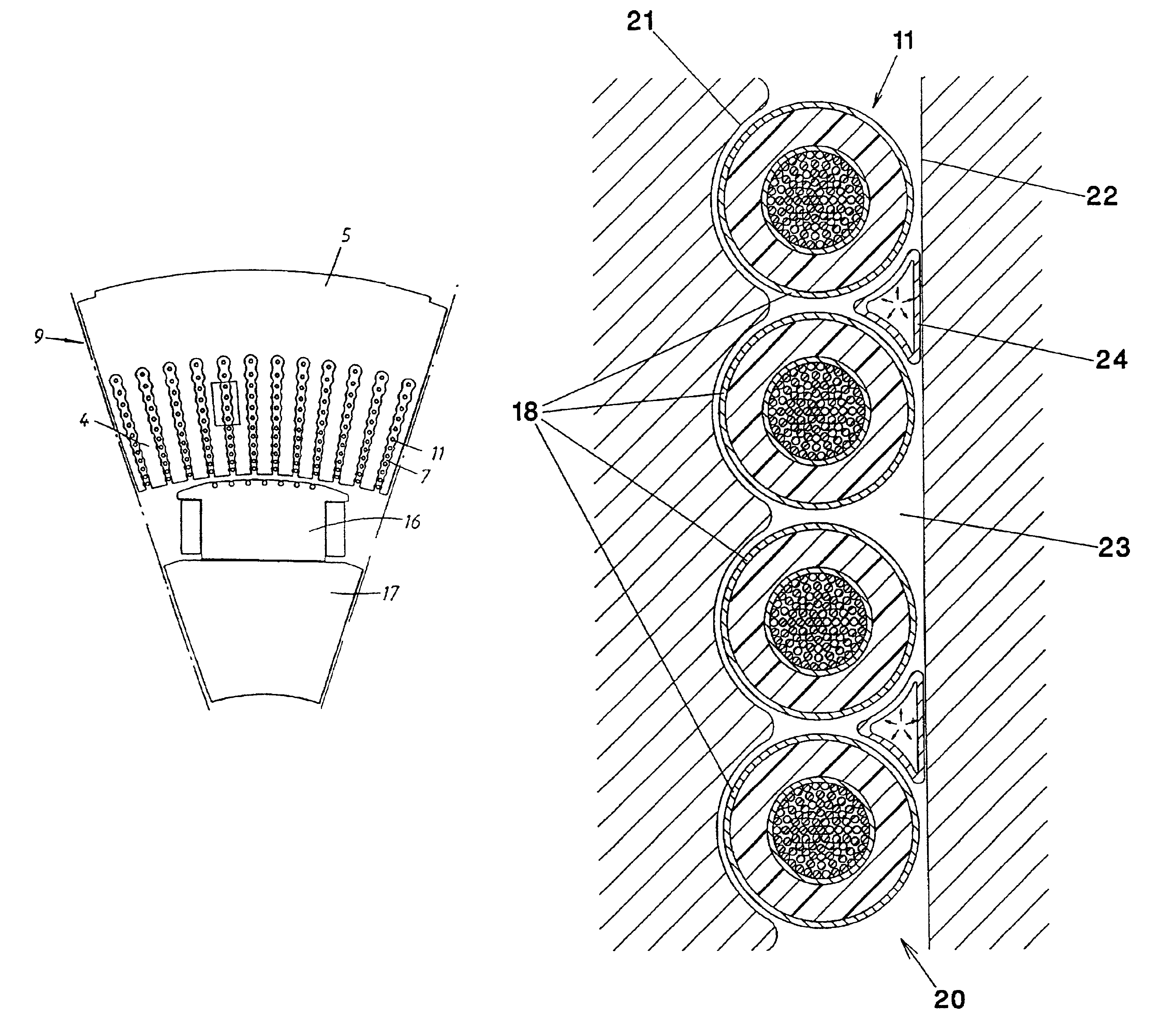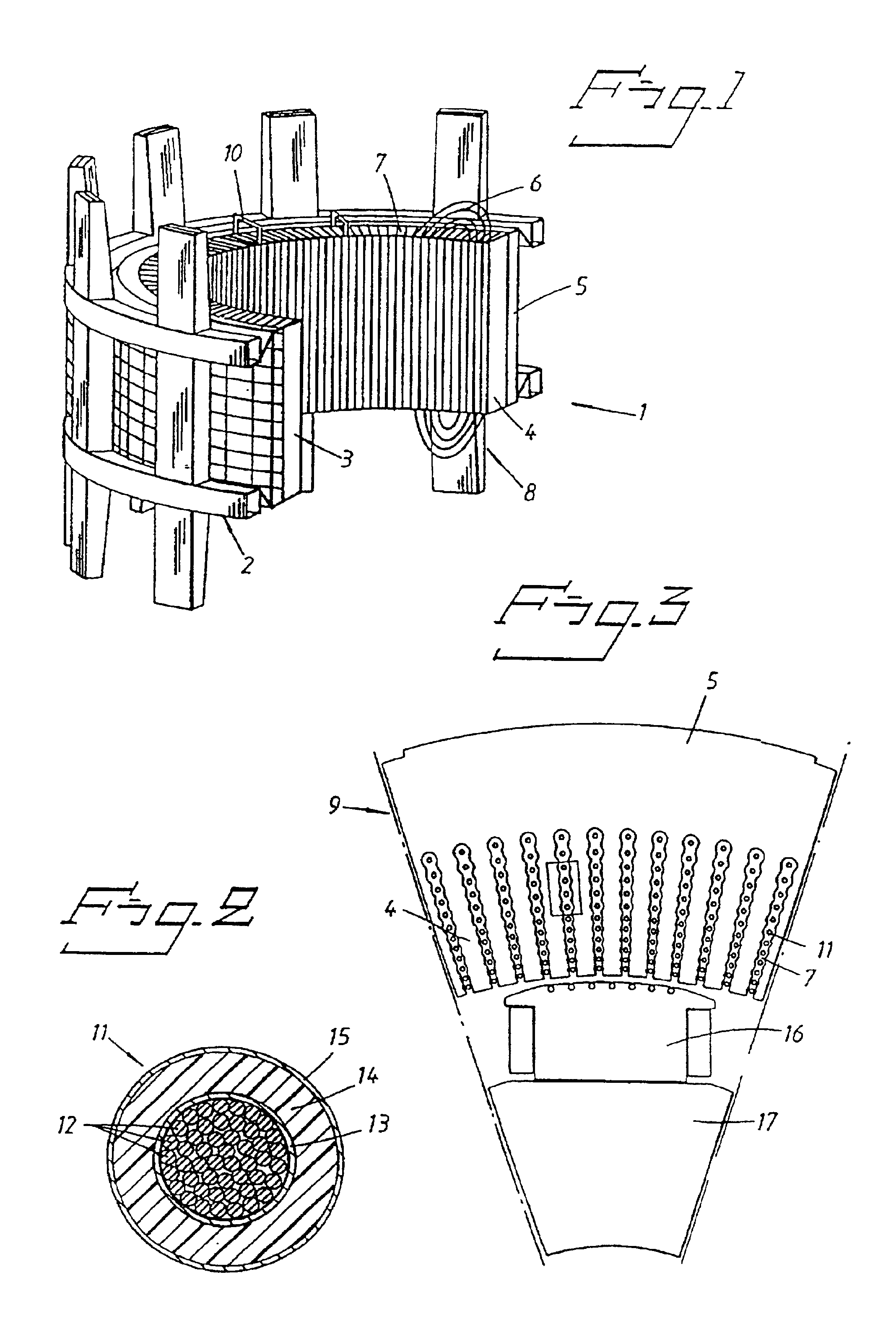Method of applying a tube member in a stator slot in a rotating electrical machine
a technology of rotating electrical machines and tube members, which is applied in the direction of windings, dynamo-electric components, cooling/ventilation arrangements, etc., can solve the problems of large ventilation loss, mechanical weakening of ventilation ducts, and long stators, so as to eliminate short-circuit risk, increase density, and high density
- Summary
- Abstract
- Description
- Claims
- Application Information
AI Technical Summary
Benefits of technology
Problems solved by technology
Method used
Image
Examples
Embodiment Construction
[0046]FIG. 1 shows part of an electric machine in which the rotor has been removed to reveal more clearly how a stator 1 is arranged. The main parts of the stator 1 include a stator frame 2, a stator core 3 having stator teeth 4 and a stator yoke 5. The stator also has a stator winding 6 in the form of a high-voltage cable, placed in a space 7 shaped like a bicycle chain, see FIG. 3, formed between each individual stator tooth 4. In FIG. 3 the stator winding 6 is only indicated by its electric conductors. As shown in FIG. 1, the stator winding 6 forms a coil-end bundle 8 on each side of the stator 1. FIG. 3 also reveals that the insulation of the high-voltage cable is stepped in several dimensions depending on its radial location in the stator 1. For the sake of simplicity only one coil-end bundle is shown in FIG. 1 at each end of the stator.
[0047]In large conventional machines the stator frame 2 often has a welded steel plate construction. In large machines the stator core 3, also ...
PUM
 Login to View More
Login to View More Abstract
Description
Claims
Application Information
 Login to View More
Login to View More - R&D
- Intellectual Property
- Life Sciences
- Materials
- Tech Scout
- Unparalleled Data Quality
- Higher Quality Content
- 60% Fewer Hallucinations
Browse by: Latest US Patents, China's latest patents, Technical Efficacy Thesaurus, Application Domain, Technology Topic, Popular Technical Reports.
© 2025 PatSnap. All rights reserved.Legal|Privacy policy|Modern Slavery Act Transparency Statement|Sitemap|About US| Contact US: help@patsnap.com



